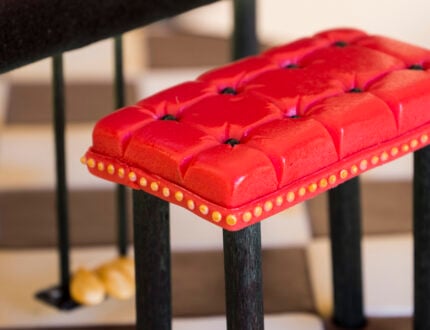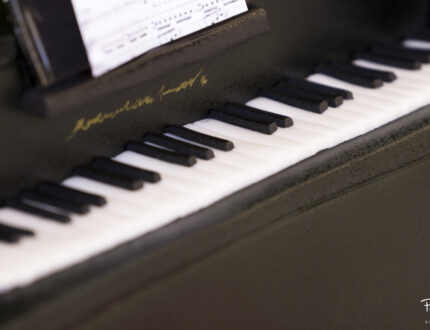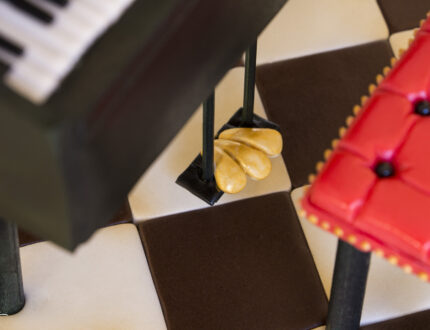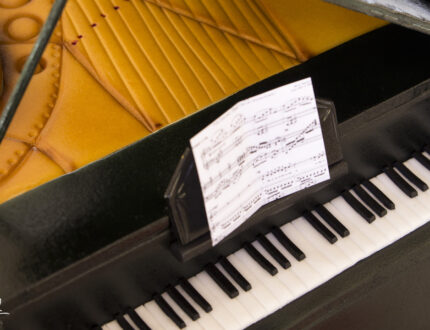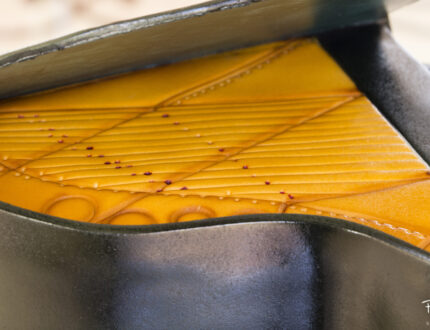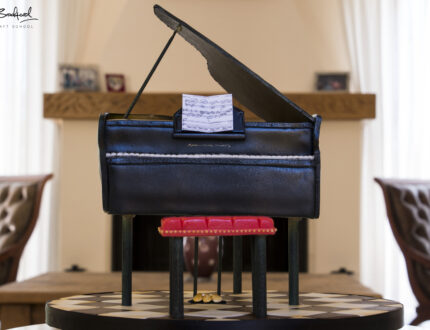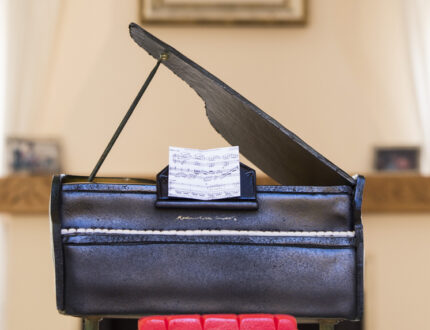Tutorial Preview
1. The Design
If you’re making the cake for a customer who has a piano, perhaps ask for a photo of the actual piano to base your cake on.
2. Icing the Board
3. Carving the Cake
In this lesson Paul shows you how to carve and place the cake onto the structure with the use of the template provided as a guide. Following this the ganaching stage is started.
Tip: Make sure to get the piano the right way round! Paul manages to make a little mistake here!
4. Ganaching the Cake - Part 1
5. Ganaching the Cake - Part 2
6. Ganaching the Cake - Part 3
7. Icing the Cake
8. Airbrushing
Tip: You can hand paint this section if you don’t have an airbrush.
9. Icing the Sides
Tip: Make sure to use a very sharp knife to cut away the excess sugarpaste.
10. Icing the Sides (Continued)
11. Creating the lid
If you prefer a piece of card can be used without the sugarpaste, simply paint it black.
12. Airbrushing the Piano
A mask is then created out of card to cover the interior section when painting the outside black finish of the piano. Build layers of black until you get a nice deep and consistent colour.
Tip: See lesson 13 for some tips when airbrushing the piano.
13. Airbrushing the Piano (Continued)
Tip: You can use the glue gun to stick the lid to the piano.
14. Piano Details - Part 1
Tip: Try to be as delicate as possible with the piano keys!
15. Piano Details - Part 2
16. Piano Details - Part 3
17. Finishing Touches
We hope you’ve enjoyed the course, proceed to the next lessons for some other ideas and the pro lesson which is available to pro members.
18. Other Ideas
19. Pro Lesson
An eagerly awaited addition to our online cake decorating courses, the Piano cake will be perfect for those of a musical disposition. The cake uses a clever structure and is beautifully realistic with no extra drying times needed, perfect for intermediate cake decorators.
